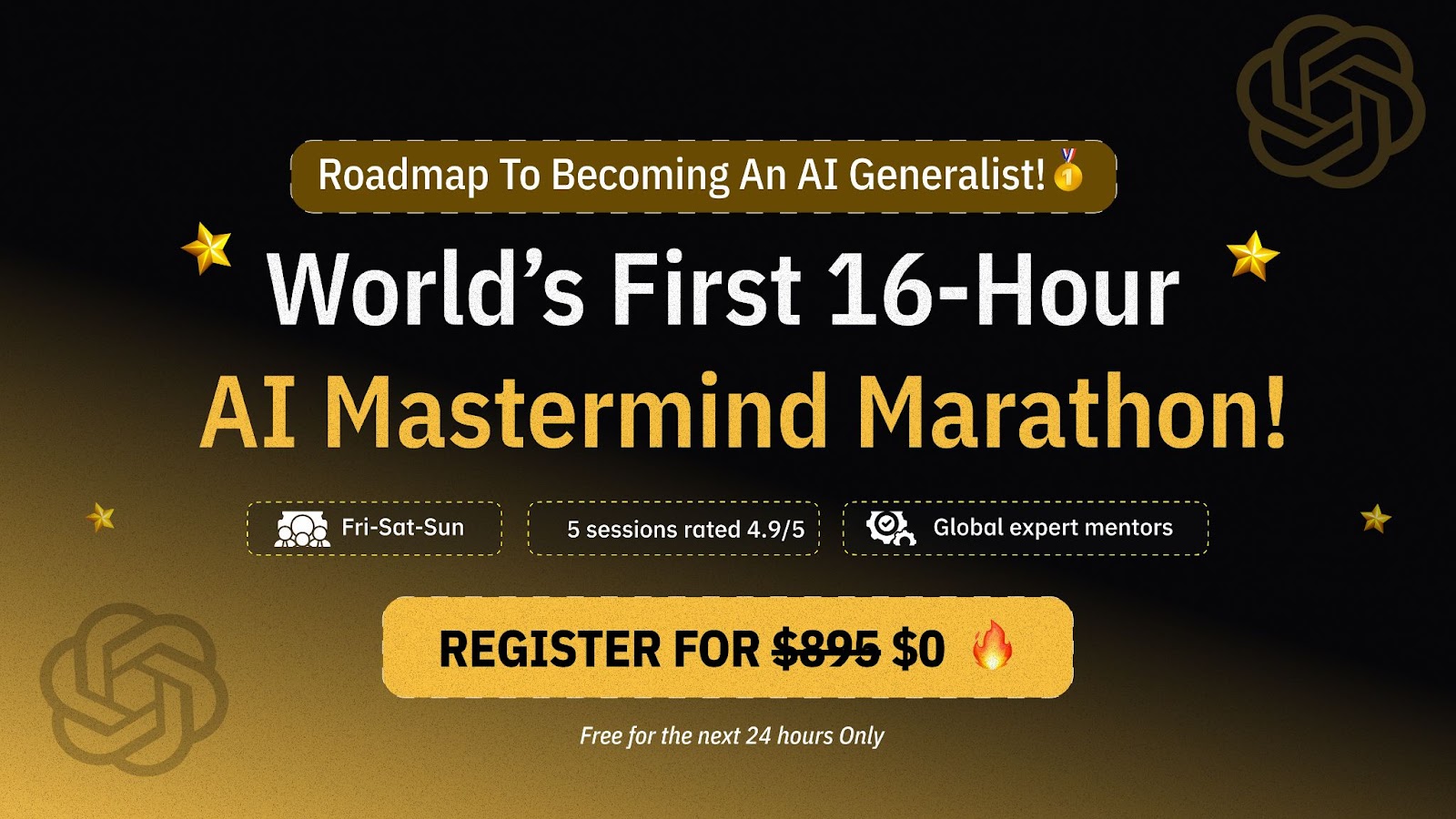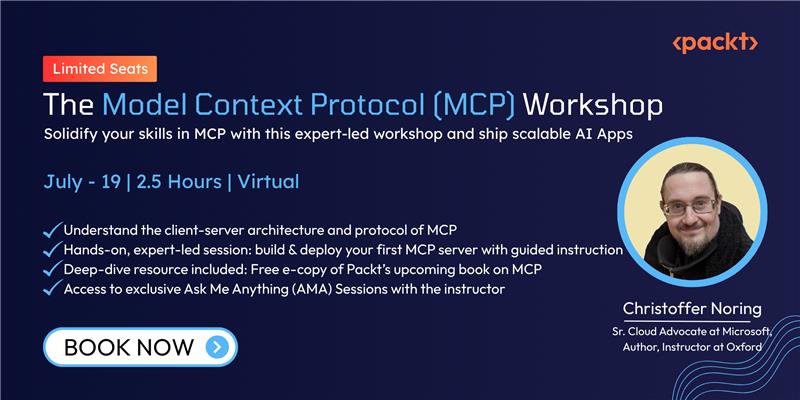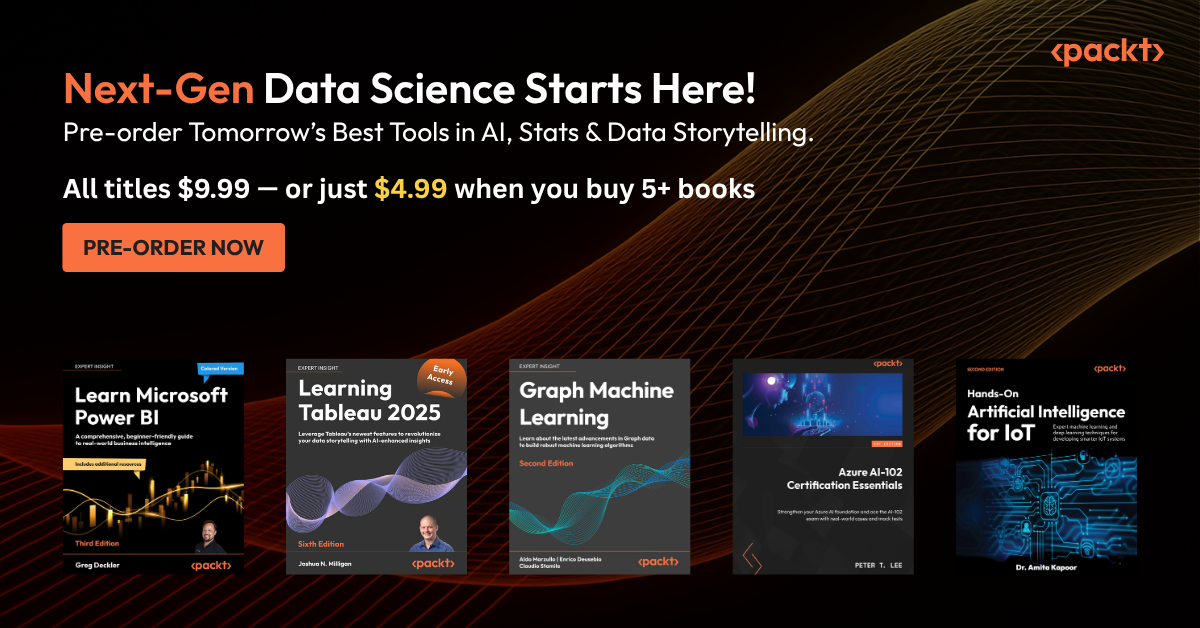🔵 Building AI-Powered Low-Code Workflows with n8n: Discover how to automate personal and business tasks using n8n, a low-code platform with built-in AI. This blog walks through building three useful workflows: a daily briefing assistant, customer support bot, and appointment scheduler, while addressing prompt injection, memory setup, and alternatives for creating intelligent, efficient systems without heavy technical effort.
Unlock access to the largest independent learning library in Tech for FREE!
Get unlimited access to 7500+ expert-authored eBooks and video courses covering every tech area you can think of.
Renews at $15.99/month. Cancel anytime
🔵 google/magenta-realtime: Explore Magenta RealTime, Google’s open music generation model designed for real-time audio creation. Licensed under Apache 2.0 and CC-BY 4.0, it enables interactive music workflows using components like SpectroStream, MusicCoCa, and a transformer LLM. It supports live performance, education, and research, while outlining usage terms, risks, and limitations.
🔵 tencent/Hunyuan3D-2.1: Get to know Hunyuan3D 2.1, a high-fidelity 3D asset generation framework from images, designed with production-ready PBR materials. Developed by Tencent, it builds on scalable diffusion models and supports text-to-3D and image-to-3D workflows. Backed by multiple arXiv publications, the project acknowledges open-source contributions and promotes reproducibility through public citation and benchmarking.
🔵 MiniMaxAI/MiniMax-M1-80k: Tackle complex reasoning and long-context challenges with MiniMax-M1, a purpose-built open-weight model for data professionals. Designed with a 1M-token context window and lightning-efficient attention, it excels in software engineering, tool use, and advanced problem-solving, making it a reliable foundation for building next-gen AI applications in practical, high-stakes environments.
 United States
United States
 Great Britain
Great Britain
 India
India
 Germany
Germany
 France
France
 Canada
Canada
 Russia
Russia
 Spain
Spain
 Brazil
Brazil
 Australia
Australia
 South Africa
South Africa
 Thailand
Thailand
 Ukraine
Ukraine
 Switzerland
Switzerland
 Slovakia
Slovakia
 Luxembourg
Luxembourg
 Hungary
Hungary
 Romania
Romania
 Denmark
Denmark
 Ireland
Ireland
 Estonia
Estonia
 Belgium
Belgium
 Italy
Italy
 Finland
Finland
 Cyprus
Cyprus
 Lithuania
Lithuania
 Latvia
Latvia
 Malta
Malta
 Netherlands
Netherlands
 Portugal
Portugal
 Slovenia
Slovenia
 Sweden
Sweden
 Argentina
Argentina
 Colombia
Colombia
 Ecuador
Ecuador
 Indonesia
Indonesia
 Mexico
Mexico
 New Zealand
New Zealand
 Norway
Norway
 South Korea
South Korea
 Taiwan
Taiwan
 Turkey
Turkey
 Czechia
Czechia
 Austria
Austria
 Greece
Greece
 Isle of Man
Isle of Man
 Bulgaria
Bulgaria
 Japan
Japan
 Philippines
Philippines
 Poland
Poland
 Singapore
Singapore
 Egypt
Egypt
 Chile
Chile
 Malaysia
Malaysia















